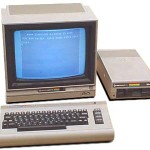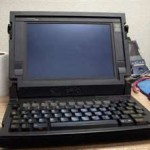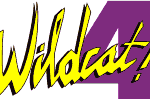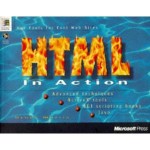I’ve often been asked how I got into programming and how I got to where I am now. So I’ve decided to write it down. It’s a somewhat long story, so if you’re the “too long, didn’t read” type, this might not be for you.
What I would like to point out are two things:
1) How one thing led to the next.
2) How doing unpaid/volunteer/hobby things led to getting paying jobs.
Junior High School

My seventh grade math teacher, Gary Dode, taught seventh and eighth grade math classes. He actually got into computers via some of his students. Over time the he and the students raised money to purchase Commodore PET computers for the classroom.
Students could take a computer class after school to learn how to program in BASIC. Normally you couldn’t take the class until you were in eighth grade, but my best friends dad worked as a computer tech for Honeywell so the teacher allowed us to take the class. This is when I started learning the BASIC programming language.
The school also allowed students to take the computers home for the weekend, which now that I think about it was crazy. There were only five computers, so when your turn finally came up, you spent every minute of your weekend programming and getting very little sleep.
Senior High School

Some time around the 9th grade I got a Commodore VIC-20 for Christmas, and soon after that purchased my own Commodore 64, monitor, disk drive, and printer, which I still have. At the time, that was some serious stuff. I did use it to dial up a bulletin board one time, but at 300 baud, you could read faster than the characters downloaded.
It wasn’t until my senior year that the school had an official class that you could take for credit. They allowed the seniors to take the class since they would be graduating soon. My teacher was Steve Markel. Since I pretty much already knew everything they taught in the class, I kinda became the teacher’s assistant.
U.S. Navy – Aviation Electronics Technician

After graduating High School in 1986 I joined the Navy to become an Aviation Electronics Technician. I still tinkered with my programming from time to time. During one deployment our shop received a Grid 386 laptop for some prototype stuff we were doing (I could tell you more about that, but then I’d have to kill you). The laptop ran MS-DOS and had BASIC on it. I used it to write a tracking program for some of our equipment. Although the program was crude, it saved us hours of work per day, and earned me some nice recognition from my superiors. This was my first exposure to MS-DOS.
Enter The PC

Somewhere about 1990 I bought my first PC, which was some RadioShack Tandy-1000 or something like that. About 1992 a friend of mine introduced me to the world of dial-up bulletin boards (BBS’s). Sometime later I got my first Windows 3.1 PC, I don’t recall exactly when that was, but it must have been 1992 or 1993.
It wasn’t long after that that I was running my own Windows based bulletin board – the first on our island. The Wildcat BBS used vector graphics instead of the normal DOS text screen you normally saw, which made it a step above everything else.
Hypertext
In 1993 I started working with a friend on a hypertext encyclopedia. The web wasn’t really around then, so a program with hypertext was quite the thing. We used Ntergaid HyperWriter. This product is so old I can’t even find a screenshot on the web.
I manually linked over 6,000 thousand encyclopedia entries. This was my first commercial software. The content for the encyclopedia was output from Ventura Publisher. Later we exported the from the hypertext program to HTML for the web, which also required some Visual Basic programming to massage that output for what we needed.
This was also my first introduction to building a setup program to install the application as well as handling support questions.
Visual Basic – The Start of Modern Windows Programming
One day while at work at the Navy base in 1994 I talked with a guy who was also a local BBS operator and told me about a product called Microsoft Visual Basic. He said it was for making Windows programs, and that the language it used was just like BASIC. I figured that if he could do it, I could – as he wasn’t very bright. I was estatic! I could write Windows programs!
Windows 95/Visual Basic QAID
It was about 1994 when I got on the internet and not long after that I got onto the Windows 95 beta program (back then beta programs were generally not open to the public). I started to teach myself HTML and soon after had two web pages going. One was the Windows 95 Question and Answer Information Database (QAID) as I called it. The other was the Visual Basic QAID. These were basically just questions and answers that I had found, about how to do stuff.
When Windows 95 released in August of 1995, my Windows 95 page was one of three webpages listed in PC World magazine of where you could go for Windows 95 help. Needless to say, the site got quite a few hits, for back then at least. It was a good thing I was friends with the guy that ran the local ISP.
Local Newspapers
At this point I was also the public affairs officer for my outfit in the Navy. I wrote articles for the base newspaper, which was printed by the local newspaper.
My contacts for the base paper at The Whidbey News Times also lead to a non-paying “job” of writing some computers articles for them, which also allowed me to “advertise” my bulletin board, which at the time was actually making money.
Brit Hume’s Survival Guide to Microsoft Windows 95

The Windows 95 QAID page lead to a contact for the production company of Brit Hume’s video entitled “Brit Hume’s Survival Guide to Microsoft Windows 95“. They needed a web site for their video, so I bid the job rather low just to get it – I wanted that on my resume. Brit Hume was a reporter for ABC News at the time and wrote articles for computer magazines. He currently works for Fox News.
BlackBird
Sometime in the summer of 1995, after 8 1/2 years of service, I had received approval for an early separation from the Navy. I went to an interview at Microsoft for their BlackBird project, which was an online content-authoring platform that was eventually scrapped. My HTML, BBS, and writing experience played a part in getting that interview. I was basically offered the job, but since I could not start as quick as they wanted me to (still being in the Navy) I was turned down. I needed three weeks to separate, and they wanted someone right away.
Logos
In August of 1995 I got out of the Navy and went to work for a local company doing tech support for various software products. One of their products was written in Visual Basic. It was purchased from another developer, and had quite a few bugs, so my Visual Basic experience is partially what got me the job. At the time, I was trying to get into contracting at Microsoft.
Microsoft Press

In February of 1996 I got a call from a temp agency for a job at Microsoft Press. It was for a technical editor position for a book called HTML in Action.
Microsoft Press saw my HTML knowledge from my web pages, and my writing skills from the Navy and local newspaper, and knew I would be a good fit. I not only did technical editing of the content, but wrote code samples, and created the screenshots used in the book.
Visual Studio Testing
Later in 1996 I got a contract position on the Microsoft main campus. This was what I had been working towards. The position was for testing the output of an internal program that was being used to convert their rich text based help file documents to HTML help. Originally I was to be proofing the output, but it wasn’t long and they realized that my software testing skills were better used to test the software itself.
Some Tax Software Company – Intro to Delphi
A few months into the Visual Studio job I asked about my contract getting extended. I didn’t want to leave the Visual Studio group, but I also didn’t want to be unemployed. They couldn’t give me a yes or no answer, so I took a contract job at some hideous tax software company. They pitched the job as a beginner software developer position using Delphi. I hadn’t used it before but they showed it to me and it was a lot like Visual Basic, so I said sure!
Turns out they just wanted people to design the forms, and there was no actual programming involved. It was good money, but very boring. Having been lied to, I told my temp agency account manager to find me another contract job, which he just ignored. So I set out to find my own…
Visual Basic Support
I don’t recall exactly how I found out about the Visual Basic Support opening at Microsoft, but I applied and promptly got called in for an interview. One Friday I told the manager of our group (who was just another contractor) that I had an interview and if I wasn’t back on Monday, she would know why. I took my keyboard and I went to the interview and immediately got hired as a contractor. I never went back to the tax software company. My Visual Basic web page and programming experience obviously played a part in getting this job. That was late 1996, maybe early 1997.
CoffeeCup Software
While still working at Microsoft, I was contacted by Nick Longo of CoffeeCup Software in June of 1997. He saw my Visual Basic web page and asked if I might know any programmers that might want to take over a software project that had outgrown his current programmer. I took a look at it and it was remarkably similar to my own program that I was working on. I quickly said “I’ll do it!”. The HTML Editor was originally written in Visual Basic, and later re-written in Delphi. I’ve been working with CoffeeCup ever since.
Icu2 (I see you too) Video Chat
In 2000, Nick introduced me to ICU2 software, owned by a friend of his. They needed a programmer to re-write their video chat software user interface. I worked for them until February of 2012 when the desktop version of the app was shut down.
Conclusion
So there you have it, that’s how I turned the hobby of computers into a career as a programmer. If I could go back and do it all over again I would probably do a few things different, but the majority of it I would keep the same.